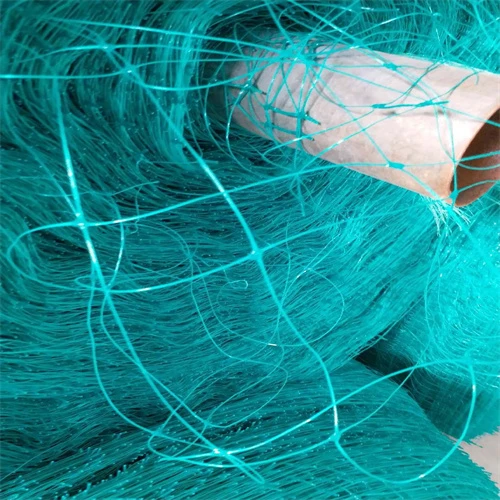-
 Afrikaans
Afrikaans -
 Albanian
Albanian -
 Amharic
Amharic -
 Arabic
Arabic -
 Armenian
Armenian -
 Azerbaijani
Azerbaijani -
 Basque
Basque -
 Belarusian
Belarusian -
 Bengali
Bengali -
 Bosnian
Bosnian -
 Bulgarian
Bulgarian -
 Catalan
Catalan -
 Cebuano
Cebuano -
 China
China -
 Corsican
Corsican -
 Croatian
Croatian -
 Czech
Czech -
 Danish
Danish -
 Dutch
Dutch -
 English
English -
 Esperanto
Esperanto -
 Estonian
Estonian -
 Finnish
Finnish -
 French
French -
 Frisian
Frisian -
 Galician
Galician -
 Georgian
Georgian -
 German
German -
 Greek
Greek -
 Gujarati
Gujarati -
 Haitian Creole
Haitian Creole -
 hausa
hausa -
 hawaiian
hawaiian -
 Hebrew
Hebrew -
 Hindi
Hindi -
 Miao
Miao -
 Hungarian
Hungarian -
 Icelandic
Icelandic -
 igbo
igbo -
 Indonesian
Indonesian -
 irish
irish -
 Italian
Italian -
 Japanese
Japanese -
 Javanese
Javanese -
 Kannada
Kannada -
 kazakh
kazakh -
 Khmer
Khmer -
 Rwandese
Rwandese -
 Korean
Korean -
 Kurdish
Kurdish -
 Kyrgyz
Kyrgyz -
 Lao
Lao -
 Latin
Latin -
 Latvian
Latvian -
 Lithuanian
Lithuanian -
 Luxembourgish
Luxembourgish -
 Macedonian
Macedonian -
 Malgashi
Malgashi -
 Malay
Malay -
 Malayalam
Malayalam -
 Maltese
Maltese -
 Maori
Maori -
 Marathi
Marathi -
 Mongolian
Mongolian -
 Myanmar
Myanmar -
 Nepali
Nepali -
 Norwegian
Norwegian -
 Norwegian
Norwegian -
 Occitan
Occitan -
 Pashto
Pashto -
 Persian
Persian -
 Polish
Polish -
 Portuguese
Portuguese -
 Punjabi
Punjabi -
 Romanian
Romanian -
 Russian
Russian -
 Samoan
Samoan -
 Scottish Gaelic
Scottish Gaelic -
 Serbian
Serbian -
 Sesotho
Sesotho -
 Shona
Shona -
 Sindhi
Sindhi -
 Sinhala
Sinhala -
 Slovak
Slovak -
 Slovenian
Slovenian -
 Somali
Somali -
 Spanish
Spanish -
 Sundanese
Sundanese -
 Swahili
Swahili -
 Swedish
Swedish -
 Tagalog
Tagalog -
 Tajik
Tajik -
 Tamil
Tamil -
 Tatar
Tatar -
 Telugu
Telugu -
 Thai
Thai -
 Turkish
Turkish -
 Turkmen
Turkmen -
 Ukrainian
Ukrainian -
 Urdu
Urdu -
 Uighur
Uighur -
 Uzbek
Uzbek -
 Vietnamese
Vietnamese -
 Welsh
Welsh -
 Bantu
Bantu -
 Yiddish
Yiddish -
 Yoruba
Yoruba -
 Zulu
Zulu
Exploring the Fascinating World of Insects and Their Networks
The Fascinating World of Nets and Insects
In the intricate web of nature, insects play a crucial role, and one of the most interesting aspects of studying them is the various types of nets that researchers use to capture and understand these tiny creatures. Insects, comprising over a million described species, are an essential part of ecosystems around the globe. Their interactions with the environment, including pollination, decomposition, and serving as food for other animals, underscore their significance.
Nets are fundamental tools in entomology, the scientific study of insects. The design and function of these nets can vary greatly depending on the specific objectives of the study and the particular types of insects being targeted. One of the most recognizable types is the insect net or sweep net, which consists of a circular hoop attached to a long handle. It is used to capture insects from grass and foliage by sweeping through vegetation. This method is effective for collecting various insects, including butterflies, moths, and beetles, and serves as a practical means for inventorying biodiversity in a specific area.
The Fascinating World of Nets and Insects
The use of nets extends beyond simple collection; they are also instrumental in studying ecological relationships. For example, researchers might use a net to capture pollinators in a flowering meadow to assess their contribution to plant reproduction. This can highlight the importance of maintaining diverse habitats for both insect populations and plant life.
nets insect

Insects have adapted various survival strategies that make capturing them a unique challenge. Some species exhibit remarkable camouflage, blending seamlessly into their surroundings to evade predators and researchers alike. Others possess rapid flight capabilities, allowing them to escape from nets with astonishing agility. This diversity in behavior and morphology necessitates creativity and adaptability in the methods used to study these creatures.
Moreover, nets can provide insight into the health of ecosystems. For instance, a decline in insect populations captured in nets might indicate broader environmental issues such as habitat loss, pollution, or climate change. Insects are often referred to as bioindicators due to their sensitivity to changes in the environment. By monitoring insect populations through net sampling, scientists can gain valuable information about the overall health of ecosystems.
In recent years, advances in technology have also complemented traditional netting techniques. DNA barcoding allows researchers to analyze genetic material from captured insects, enabling the identification of species that might be indistinguishable based on physical characteristics alone. This molecular approach enhances our understanding of biodiversity and can reveal hidden patterns in insect populations.
In conclusion, nets serve as vital tools in the study of insects, enabling researchers to capture, analyze, and understand the complex interactions within ecosystems. Through the application of these tools, scientists not only gather essential data about insect populations but also highlight the importance of preserving these remarkable creatures for the health of our planet. As we continue to explore the fascinating world of insects, it becomes increasingly clear that our understanding of these tiny beings can have a significant impact on ecological conservation and biodiversity efforts. The intricate relationship between nets and insects opens up endless possibilities for discovery, ensuring that the study of these creatures remains an exciting frontier in scientific inquiry.
-
Shipping Plastic Bags for Every NeedNewsJul.24,2025
-
Safety Netting: Your Shield in ConstructionNewsJul.24,2025
-
Plastic Mesh Netting for Everyday UseNewsJul.24,2025
-
Nylon Netting for Every UseNewsJul.24,2025
-
Mesh Breeder Box for Fish TanksNewsJul.24,2025
-
Expanded Steel Mesh Offers Durable VersatilityNewsJul.24,2025











